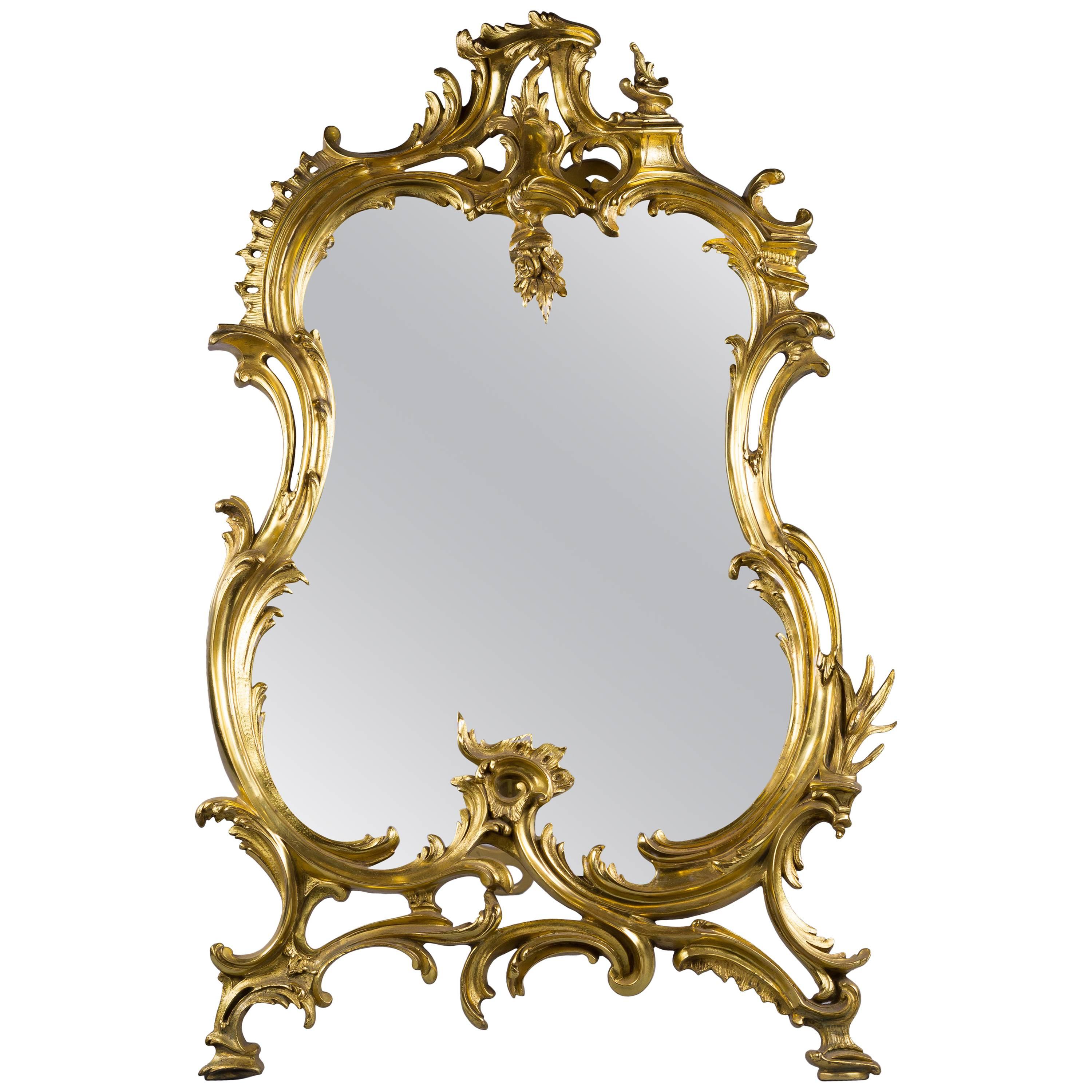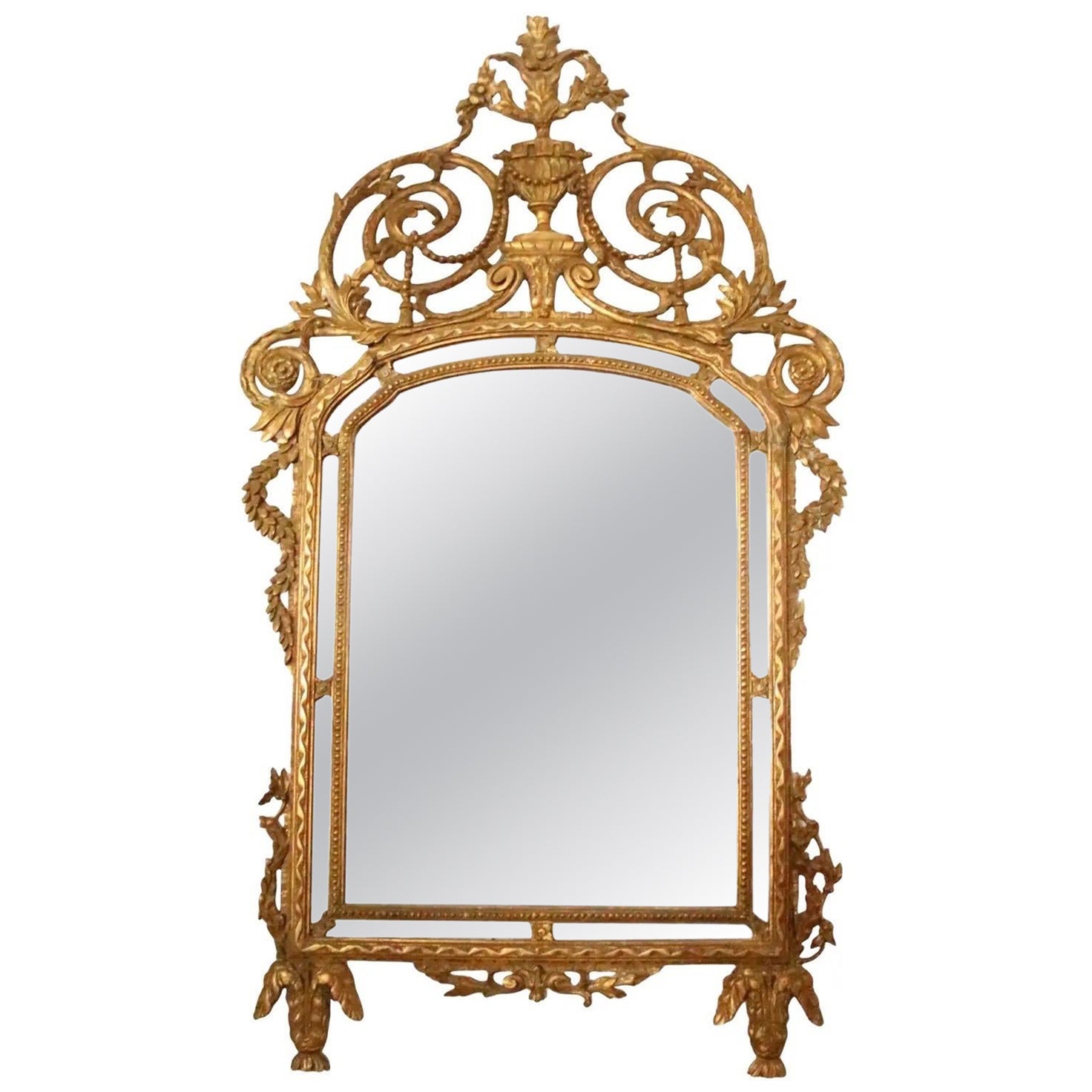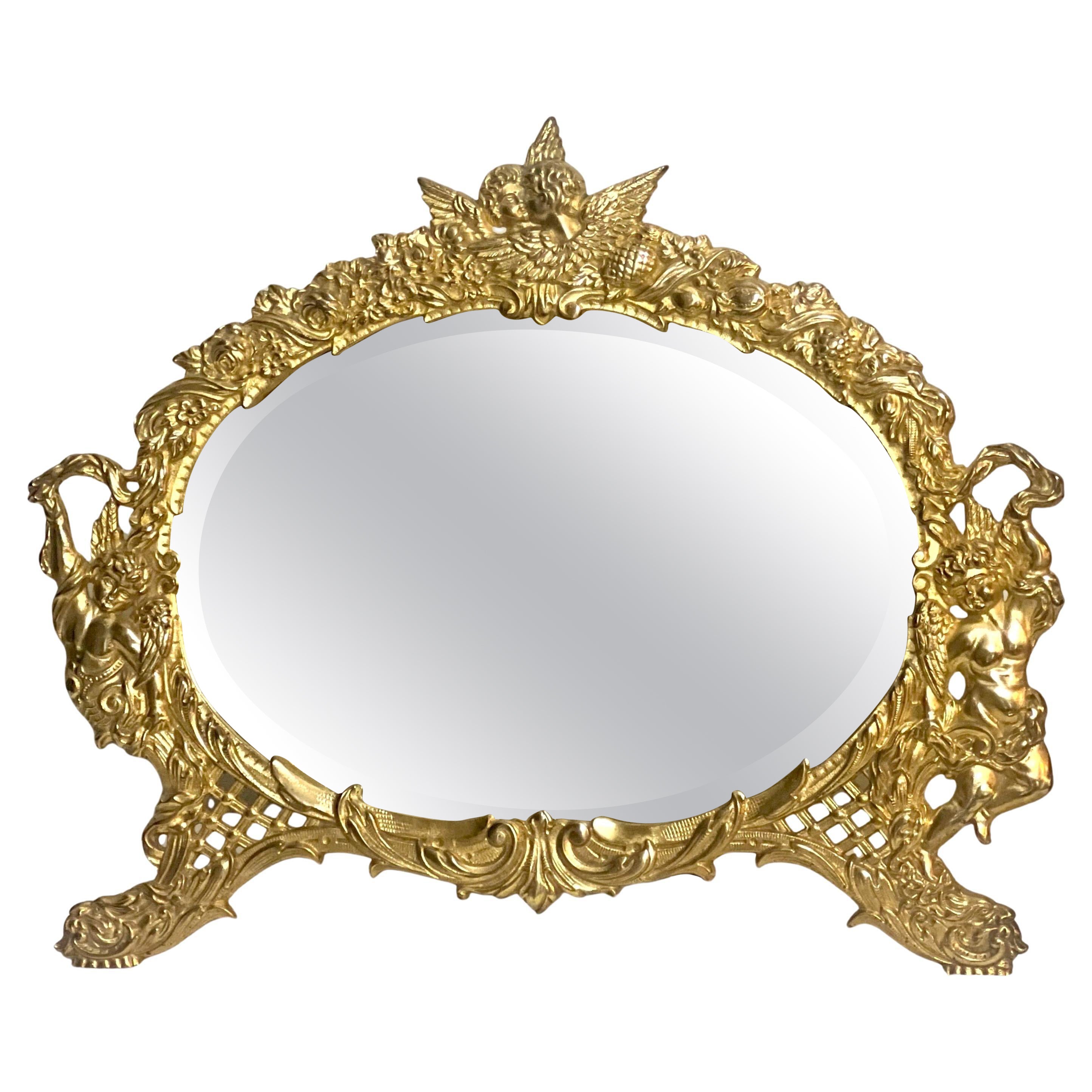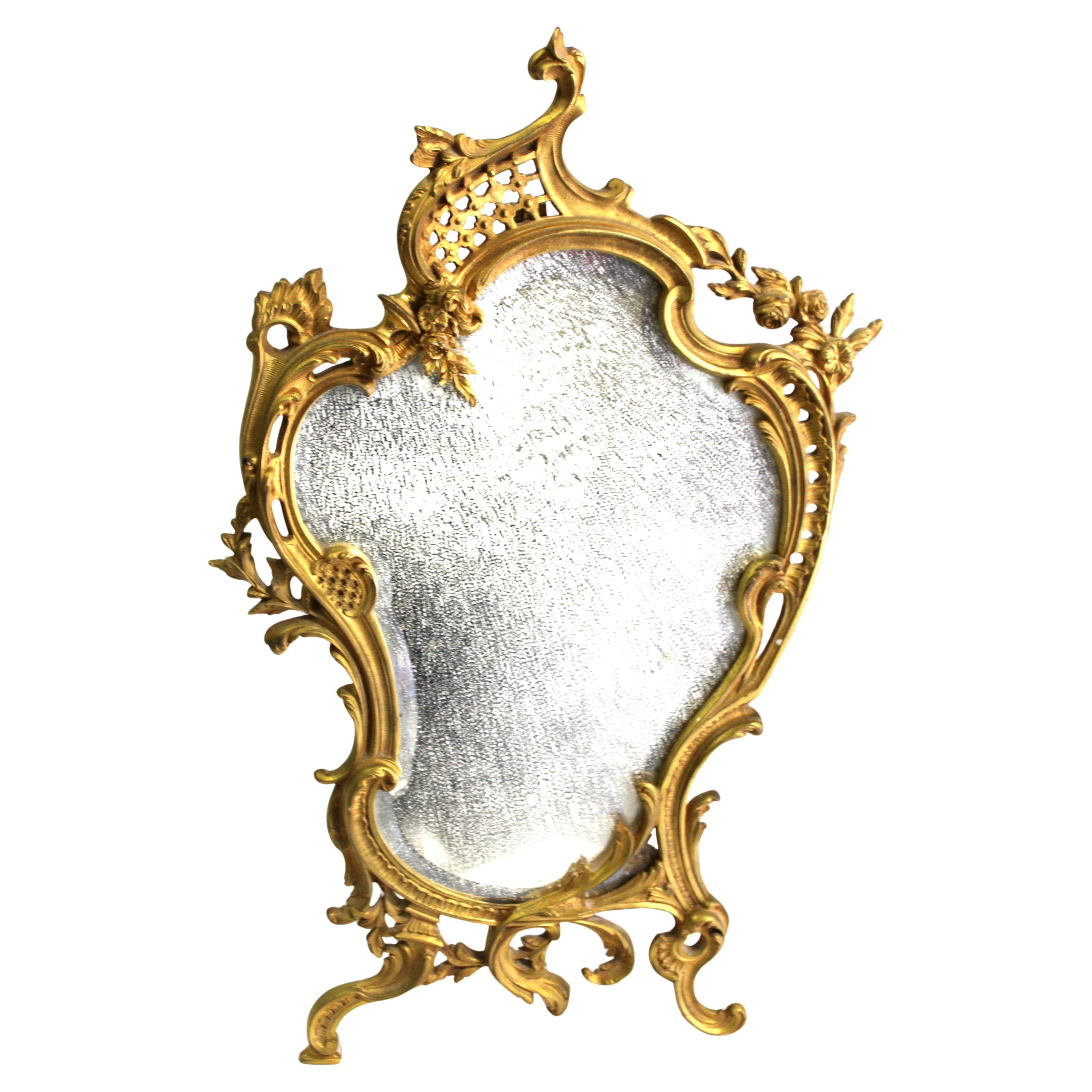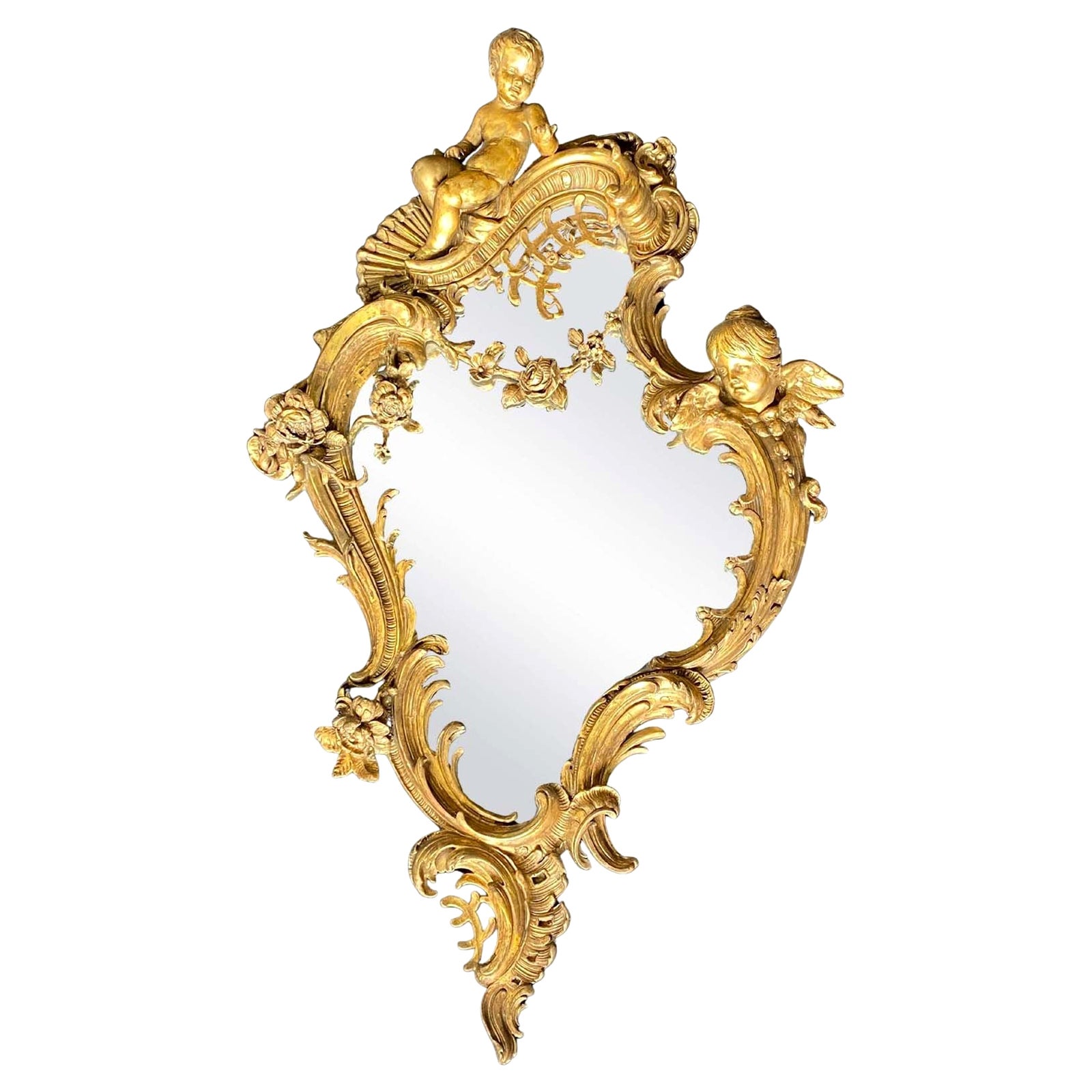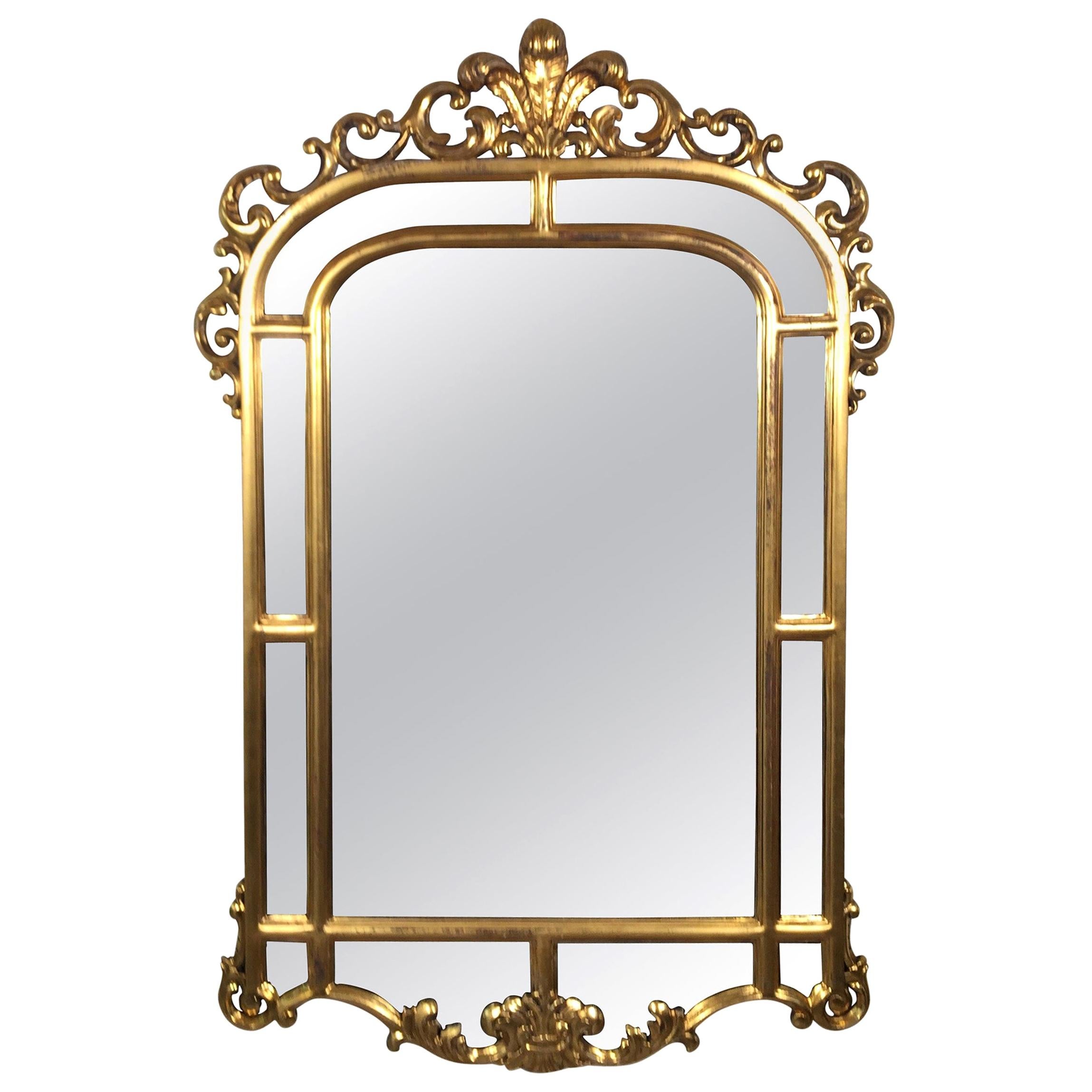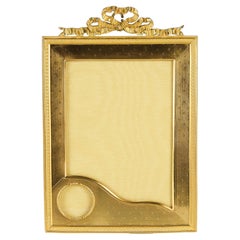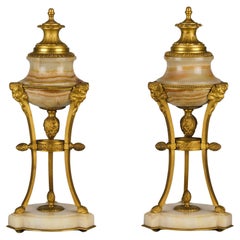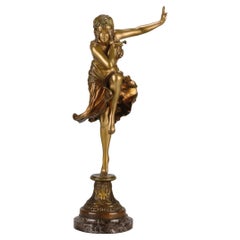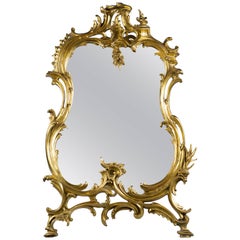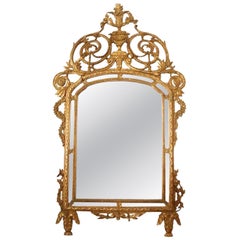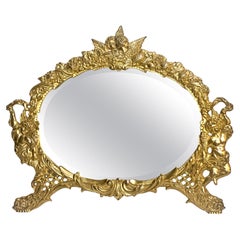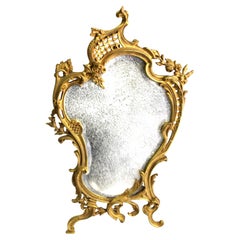Items Similar to Late 19th Century "Cloisonné Table Mirror" French Gilt Bronze
Want more images or videos?
Request additional images or videos from the seller
1 of 7
Late 19th Century "Cloisonné Table Mirror" French Gilt Bronze
$2,130.58
£1,550
€1,820.50
CA$2,971.54
A$3,218.91
CHF 1,694.89
MX$39,070.94
NOK 21,137.38
SEK 19,984.90
DKK 13,590.53
About the Item
A wonderful late 19th Century Art Nouveau ormolu photoraph frame decorated with a floral motif highlighted with hand painted enamel patterned border
ADDITIONAL INFORMATION
Height: 21.5 cm
Condition: Excellent Original Condition
Circa: 1900
Materials: Gilt Bronze
SKU: 9226
ABOUT
Art Nouveau Bronze
Art Nouveau was a movement that swept through the decorative arts and architecture in the late 19th and early 20th centuries. Generating enthusiasts throughout Europe and beyond, the movement issued in a wide variety of styles, and, consequently, it is known by various names, such as the Glasgow Style, or, in the German-speaking world, Jugendstil. Art Nouveau was aimed at modernizing design, seeking to escape the eclectic historical styles that had previously been popular. Artists drew inspiration from both organic and geometric forms, evolving elegant designs that united flowing, natural forms with more angular contours. The movement was committed to abolishing the traditional hierarchy of the arts, which viewed so-called liberal arts, such as painting and sculpture, as superior to craft-based decorative arts, and ultimately it had far more influence on the latter. The style went out of fashion after it gave way to Art Deco in the 1920s, but it experienced a popular revival in the 1960s, and it is now seen as an important predecessor of Modernism.
The desire to abandon the historical styles of the 19th century was an important impetus behind Art Nouveau and one that establishes the movement’s modernism. Industrial production was, at that point, widespread, and yet the decorative arts were increasingly dominated by poorly made objects imitating earlier periods. The practitioners of Art Nouveau sought to revive good workmanship, raise the status of craft, and produce genuinely modern design.
- Dimensions:Height: 8.47 in (21.5 cm)Width: 0 in (0.01 mm)Depth: 0 in (0.01 mm)
- Style:Art Nouveau (Of the Period)
- Materials and Techniques:Bronze,Cast
- Place of Origin:
- Period:
- Date of Manufacture:1900
- Condition:Wear consistent with age and use.
- Seller Location:London, GB
- Reference Number:Seller: 92261stDibs: LU3216341846342
About the Seller
5.0
Vetted Professional Seller
Every seller passes strict standards for authenticity and reliability
Established in 1936
1stDibs seller since 2017
85 sales on 1stDibs
Typical response time: <1 hour
- ShippingRetrieving quote...Shipping from: London, United Kingdom
- Return Policy
Authenticity Guarantee
In the unlikely event there’s an issue with an item’s authenticity, contact us within 1 year for a full refund. DetailsMoney-Back Guarantee
If your item is not as described, is damaged in transit, or does not arrive, contact us within 7 days for a full refund. Details24-Hour Cancellation
You have a 24-hour grace period in which to reconsider your purchase, with no questions asked.Vetted Professional Sellers
Our world-class sellers must adhere to strict standards for service and quality, maintaining the integrity of our listings.Price-Match Guarantee
If you find that a seller listed the same item for a lower price elsewhere, we’ll match it.Trusted Global Delivery
Our best-in-class carrier network provides specialized shipping options worldwide, including custom delivery.More From This Seller
View AllEarly 20th Century French Gilt Bronze Frame in the Louis XVI Style
Located in London, GB
A wonderful late 19th Century gilt bronze photograph frame in the Louis XVI style featuring fine neoclassical motifs including celestial stars, ribbons and ribbon garlands, with unus...
Category
Early 20th Century French Louis XVI Picture Frames
Materials
Gold, Bronze
Late 19th Century French Gilt Bronze and Onyx "Ormolu Cassolettes"
Located in London, GB
"Ormolu Cassolettes"
A highly attractive pair of late 19th Century gilt bronze and onyx cassolettes. The onyx cassolette pots raised on gilt bronze tripod decorated with raised faces and acorns exhibiting excellent hand finished detail
ADDITIONAL INFORMATION
Height: 25.5 cm
Width: 10 cm
Depth: 10 cm
Condition: Excellent Condition
Circa: 1890
Materials: Bronze & Onyx
SKU: 9167
ABOUT
Ormolu is the gilding technique of applying finely ground, high-carat gold–mercury amalgam to an object of bronze, and for objects finished in this way.The manufacture of true ormolu employs a process known as mercury-gilding or fire-gilding, in which a solution of mercuric nitrate is applied to a piece of copper, brass, or bronze; followed by the application of an amalgam of gold and mercury. The item is then exposed to extreme heat until the mercury vaporizes and the gold remains, adhering to the metal object...
Category
Antique Late 19th Century French French Provincial Desk Sets
Materials
Onyx, Bronze
Early 20th Century Gilt Bronze Entitled "Hindu Dancer" by Claire Colinet
By Claire Colinet
Located in London, GB
A dramatic early 20th Century French Art Deco gilt and enamel bronze figure of a beautiful elegant dancer in stylised pose wearing an attractive costume and headdress with superb intricate surface detail and colour, raised on an intergral shaped bronze base and lifted on a lavanto marble plinth, signed Cl.J.R.Colinet
ADDITIONAL INFORMATION
Height: 37 cm
Width: 16 cm
Condition: Excellent Original Condition
Circa: 1925
Materials: Gilt Bronze & Marble
Book Ref: Art Deco & Other Figures by Bryan Catley
Page: 120
SKU: 8717
ABOUT
Colinet
Claire Jeanne Roberte Colinet (1880–1950) was French sculptor of Belgian birth who worked during the early-to-mid 20th century. The subject matter of her best known work was primarily Arab female dancers. The majority of her career output in sculpture can be classified as being of the Art Deco style.
Colinet was a frequent exhibitor at the Salon des Artistes Francais and Salon des Independents art exhibitions in Paris. Her sculptures, most of which depicted beautifully figured, energized, and dramatic female forms, were exhibited posthumously at the Paris Salon for nearly 30 years.
Early Life
Colinet was born in Brussels, Belgium, in 1880. Little is known about her life other than the artwork she produced during a successful career that spanned more than 40 years. As a woman, she was in the minority in her chosen field of sculpture during the era in which she worked and lived.
Career
At an undetermined date – probably around 1910 – Colinet emigrated to Paris, France, where she studied sculpture under the watchful eye of Jef Lambeaux and exhibited for the first time at the Salon des Artistes Francais in 1913 and became a permanent member of the organization in 1929. From 1937 to 1940, she exhibited at the Salon des Independents in Paris and joined the Union of Women Painters and Sculptors. Colinet's work is primarily done in the Art Deco style, and her models included odalisques, exotic dancers, jugglers and artists of cabaret.
A number of her female dancer pieces were influenced by a revival of the Orientalism movement which had been popular in Europe from about 1860 to 1880. Her preferred casting material was bronze; however, a number of her most distinguished sculptures are chryselephantine, being a combination of both bronze and ivory.
Colinet's sculpture has become highly desirable to collectors and, increasingly, is selling for exorbitant sums. At a Christie's sale on 4 May 2007, her Ankara Dancer...
Category
20th Century French Art Deco Figurative Sculptures
Materials
Marble, Bronze
Early 20th Century Art Nouveau Bronze Entitled "La Jeuneuse" by Antonin Carlès
By Antonin Carlès
Located in London, GB
A delightful Art Nouveau early 20th Century gilt bronze figure of a very beautiful young lady holding a flower in her right hand, the surface of the bronze exhibiting fine detail and...
Category
Antique Early 1900s French Art Nouveau Figurative Sculptures
Materials
Bronze
Early 20th Century Art Deco Gilt Bronze Sculpture "Isis" by Claire Colinet
By Claire Colinet
Located in London, GB
An exquisite early 20th Century French Art Deco gilt bronze figure of a young female dancer seated upon a shawl that she is lifting either side of her. The surface decorated with enamel painted ancient Egyptian design, exhibiting excellent colour and detail. Raised on a marble base and signed Cl.J.R.Colinet
ADDITIONAL INFORMATION
Height: 42 cm
Width: 56 cm
Depth: 21 cm
Condition: Excellent Original Condition
Circa: 1925
Materials: Bronze & Marble
Book Ref: Art Deco & Other Figures by Bryan Catley
Page: 117
SKU: 9176
ABOUT
Colinet
Claire Jeanne Roberte Colinet (1880–1950) was French sculptor of Belgian birth who worked during the early-to-mid 20th century. The subject matter of her best known work was primarily Arab female dancers. The majority of her career output in sculpture can be classified as being of the Art Deco style.
Colinet was a frequent exhibitor at the Salon des Artistes Francais and Salon des Independents art exhibitions in Paris. Her sculptures, most of which depicted beautifully figured, energized, and dramatic female forms, were exhibited posthumously at the Paris Salon for nearly 30 years.
Early Life
Colinet was born in Brussels, Belgium, in 1880. Little is known about her life other than the artwork she produced during a successful career that spanned more than 40 years. As a woman, she was in the minority in her chosen field of sculpture during the era in which she worked and lived.
Career
At an undetermined date – probably around 1910 – Colinet emigrated to Paris, France, where she studied sculpture under the watchful eye of Jef Lambeaux and exhibited for the first time at the Salon des Artistes Francais in 1913 and became a permanent member of the organization in 1929. From 1937 to 1940, she exhibited at the Salon des Independents in Paris and joined the Union of Women Painters and Sculptors. Colinet's work is primarily done in the Art Deco style, and her models included odalisques, exotic dancers, jugglers and artists of cabaret.
A number of her female dancer pieces were influenced by a revival of the Orientalism movement which had been popular in Europe from about 1860 to 1880. Her preferred casting material was bronze; however, a number of her most distinguished sculptures are chryselephantine, being a combination of both bronze and ivory.
Colinet's sculpture has become highly desirable to collectors and, increasingly, is selling for exorbitant sums. At a Christie's sale on 4 May 2007, her Ankara Dancer...
Category
Early 20th Century French Art Deco Figurative Sculptures
Materials
Bronze
Late 19th Century Art Nouveau Sculpture "Nature Unveiling" by Ernst Barrias
Located in London, GB
Wonderful late 19th Century Art Nouveau French bronze figure of a seductively draped female figure representing, in allegorical form, Nature revealing her secrets to Science, a fitti...
Category
Antique Late 19th Century French Art Nouveau Figurative Sculptures
Materials
Marble, Bronze
You May Also Like
French Gilt Bronze Table Mirror, circa 1875
Located in New York, NY
French gilt bronze table mirror, circa 1875.
Category
Antique 1870s Table Mirrors
Materials
Bronze
Mid 19th Century Italian Giltwood Mirror
Located in Sarasota, FL
A Giltwood Italian mirror circa 1850. Framed with carved beading and scrolled ribbon at the mirror edge, the frame is decorated with elaborate scrolled acanthus and trailing leaves....
Category
Antique 1850s Italian Art Nouveau Wall Mirrors
Materials
Mirror, Giltwood
19th C. National Brass and Iron Works Gilded Cast Iron Beveled Tabletop Mirror
Located in Doylestown, PA
Ornate, easel style gilded cast iron beveled elliptical oval tabletop mirror by National Brass and Iron Works, late 19th century. It feat...
Category
Antique Late 19th Century North American Aesthetic Movement Table Mirrors
Materials
Iron
Vintage French, Gold Dore' table mirror. Early 20 Th Century
Located in Los Angeles, CA
A larger size Table Mirror in very fine metal work and with a hi-light polished Gold Dire' plated finish . No factory marks except on the back of the support leg . Looks like an ( I...
Category
Early 20th Century French Art Nouveau Table Mirrors
Materials
Metal
French Mid-19th Century Gilt Wall Mirror
Located in Los Angeles, CA
French gilt wall mirror made in the Mid-19th Century.
Dimensions:
53"H x 31"W x 7"D.
Category
Antique Mid-19th Century French French Provincial Wall Mirrors
Materials
Mirror, Giltwood
Gold Gilt French Style Mirror in Original Condition, circa 1890s
Located in Lambertville, NJ
Gold gilt French style mirror in original condition, mirror has age appropriate loses to the silver. Nice gilt mirror in original condition for the purist, circa 1890s.
Dimensions: ...
Category
Antique 1890s English Wall Mirrors
Materials
Wood, Mirror
More Ways To Browse
19th Century Gold Gilt Mirror
Bronze French Mirror
Gold Table Mirror
Bronze Gilt Mirror
French Art Nouveau Mirror
Cast Bronze Mirror
Gold Mirror Art Nouveau
Cloisonne Mirror
Polished Nickel Vanity Mirror
Rolex Mirror
Silver Plated Oval Mirror
Small Standing Mirror
Vintage Makeup Mirror
Wishbone Charles Hollis Vanity Mirror
Wishbone Mirror
Art Nouveau Bronze Lady Table Mirror
Barley Twist Vanity
Brass Trifold Mirror
